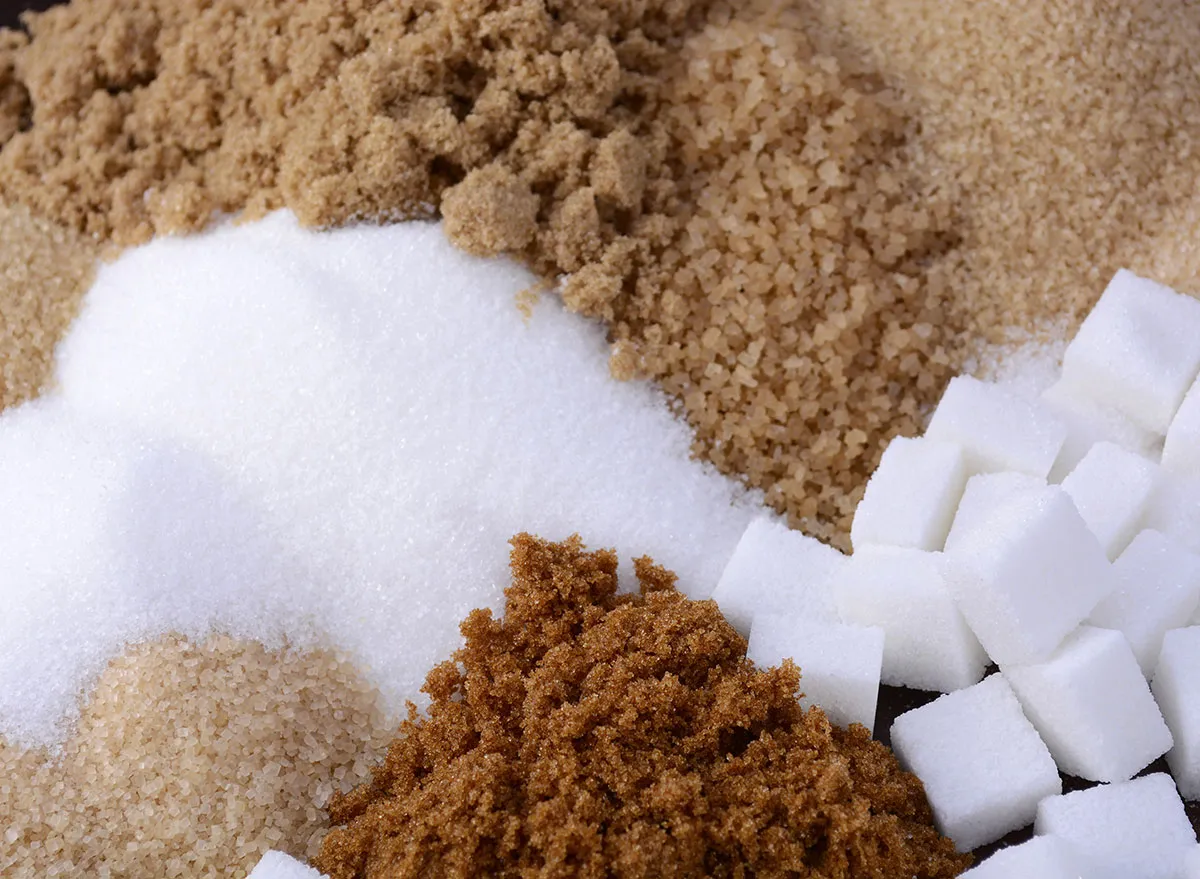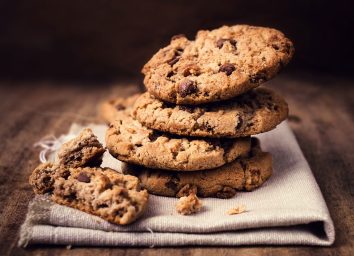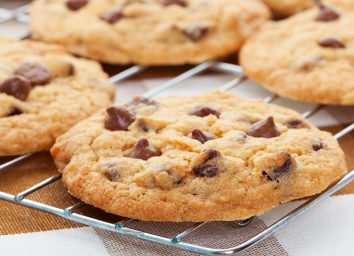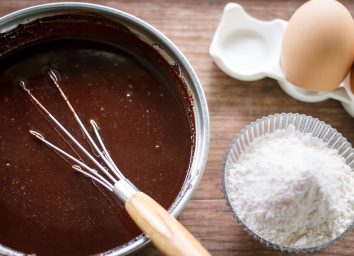The 15 Different Types of Sugar and How to Use Them

When you think of sugar, a couple types probably come to mind immediately: white sugar and brown sugar. But while those are the most likely options to be found in your sugar canister or pantry, there are actually a wide variety of sugars used in cooking and baking. Ever heard of muscovado? It can give your baked goods a natural butterscotch flavor. Powdered sugar dissolves easily into liquid, which is what makes this sugar ideal for icing. Pearl sugar that you find in Scandinavian desserts doesn’t melt in the heat.
All sugars do have something in common, though: They are made by extracting sugar juice from sugar beet or sugarcane plants. But, from there, many varieties of sugar can be made, some great for lending a crunchy, sweet texture to bread and others that are molasses-forward and that go well in barbecue sauces.
We asked pastry chefs to explain the 15 different varieties of sugar and how to best use them based on their flavor and texture. With this sweet crash course, you’ll be an even better baker!
1. Granulated sugar
This is the most common type of sugar. From cookies to cakes, there’s a good chance the recipe is calling for granulated sugar. “The fine crystals make for standard measuring, as they don’t cake together like many other sugars do,” says Nadine Donovan, the executive pastry chef for Colorado-based restaurant group Secret Sauce.
2. Confectioners’ sugar
Also known as powdered sugar, this is basically granulated sugar that’s ground to a smooth powder and then sifted, according to The Sugar Association. It’s usually mixed with a little bit of cornstarch to prevent it from caking. Confectioners’ sugar is perfect for decorating a variety of baked goods, Donovan says. It can be sprinkled on a dessert or used to make icing. Because it’s smooth and has stabilizing properties, it’s often used in whipped cream, too, she says. You can actually make powdered sugar at home, by blending one cup of sugar with one tablespoon of cornstarch.
3. Fruit sugar
Fruit sugar crystals are smaller than those of regular sugar, according to The Sugar Association. This is the type of sugar you’ll commonly find in dry mixes used to make pudding or gelatin.
4. Baker’s special sugar
“The fine nature of baker’s special sugar is ideal for meringues and buttercreams, as it dissolves much faster than regular granulated sugar,” Donovan says. Developed for the baking industry specifically, you’ll often see it as the sugar used atop donuts or cookies or to create fine crumbles, The Sugar Association says.
5. Superfine sugar
Caster sugar or bar sugar are some of the names that this sugar goes by. Superfine sugar is, you guessed it, made up of fine crystals. Because of this, it dissolves well in cold beverages and can be used to make a simple syrup for cocktails, Donovan says.
6. Cane sugar
Cane sugar is minimally processed sugar that’s made from sugarcane alone, explains Jeff Ontiveros, the senior manager of Whole Foods Market’s Global Pastry Program. This sugar can be used in any product that calls for “granulated sugar,” he says.
7. Coarse sugar
This type consists of large crystals. You’ll often find coarse sugar topping baked items like quick breads, cookies, and Danish pastries, Ontiveros says. “It gives a crunchy texture to the final product,” he says. The larger crystals also make it resistant to inversion (that’s the breakdown to fructose and glucose) at baking temperatures, according to The Sugar Association, so coarse sugar is good for fondants and liquor.
8. Sanding sugar
Whether the granules are large or small, they reflect light to look as though they are sparkling, according to The Sugar Association. Sanding sugar is used to decorate products that are already baked, Ontiveros explains. “This sugar is usually colored and sprinkled onto sugar cookies with royal icing,” he says.
9. Pearl sugar
Because of its thick granules, pearl sugar doesn’t melt during the baking process, explains Clémence Gossett, co-owner and head pastry chef at The Gourmandise School of Sweets & Savories. The school uses pearl sugar, for example, in its Scandinavian classes. “Pearl sugars are made by compressing white sugar to keep it from dissolving, even inside baked goods like those delicious Liege waffles,” she says.
10. Light brown sugar
Brown sugars are made by adding molasses to refined sugar crystals; less so for light brown sugar and more for dark brown, explains Gossett. “The extra moisture from the molasses is what helps give your chocolate chip cookies a chewier consistency and a deeper, more complex sweetness,” she says. Light brown sugar is most commonly used in baked goods, according to The Sugar Association.
You can make your own brown sugar at home: Combine two tablespoons of molasses with one cup of white sugar, Gossett says. Stir at first with a spoon, then rub with your fingers and watch it transform into brown sugar.
11. Dark brown sugar
Dark brown sugar is darker in color and has more of a molasses flavor than light brown sugar. It’s used in baking to produce a more complex caramel and toffee flavor, Ontiveros says. This rich aroma is just right for gingerbread cookies, as well as baked beans and barbecuing, according to The Sugar Association.
12. Free-flowing brown sugar
This brown sugar has less moisture content, but is still full of flavor, Ontiveros says. “It’s used for sprinkling on finished dishes, such as oatmeal and cereal,” he says. The powder-like brown sugar is also known as granulated brown sugar.
13. Turbinado sugar
Turbinado sugar is produced after the crystals are spun off from the molasses but before those crystals are refined and bleached, Gossett says. “The larger, golden granules retain more of the complex flavors and make a lovely addition to your teas and coffees,” she says.
14. Muscovado sugar
Looking for a traditional butterscotch flavor? Ignore the bag of artificially flavored chips at the supermarket and look for a small bag of muscovado sugar, suggests Gossett. “Muscovado is the least processed of all the sugars on the market, and, as such, retains the most complex sweetness, including the intense butterscotch notes you remember from candies and puddings,” she says.
15. Liquid sugar
Simple syrup, or liquid sugar, has a 1:1 ratio of water and white, granulated sugar. This type of sugar is not crystalized, and it uniformly melts into liquids, Ontiveros explains. This would be most commonly used to sweeten drinks like coffee, tea, or cocktails.
Which sugars are healthiest?
You may be curious if one type of added sugar is better for you than others. Really, though, there is no way around the fact that added sugars contain additional calories. They are all metabolized by the body in the same way, according to an article published by the Harvard Medical School. That’s because sugars contain varying ratios of fructose and glucose. If the added sugar has more fructose than glucose, it doesn’t mean it’s healthier. Those suffering from diabetes are an exception, however, because they need to control their blood glucose—so a higher-fructose, lower-glucose sugar tends to be better.
However, naturally occurring sugars that are in fruits are healthier because they are packaged with nutrients and fiber.








